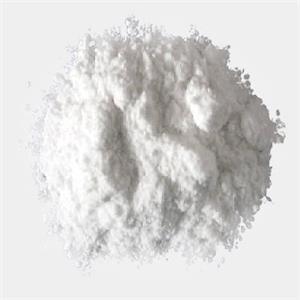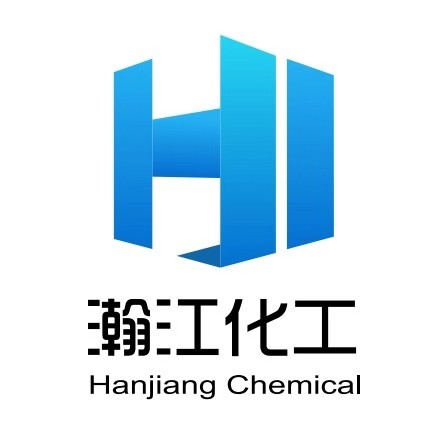
Gamma aminobutyric acid
| Price | Get Latest Price | ||
| Package | 1kg | 1kg | 1kg |
| Min. Order: | 1kg |
| Supply Ability: | 1T |
| Update Time: | 2025-07-29 |
Product Details
| Product Name: Gamma aminobutyric acid | CAS No.: 56-12-2 |
| Min. Order: 1kg | Purity: 99% |
| Supply Ability: 1T | Release date: 2025/07/29 |
| Product Name: | 4-Aminobutyric acid |
| Synonyms: | 4-AMINOBUTANOIC ACID;4-AMINOBUTYRIC ACID;4-AMINO-N-BUTYRIC ACID;ALPHA-AMINOBUTANOIC ACID;AMINOBUTYRIC ACID, 4-;AMINOBUTYRIC-4 ACID;AURORA KA-1053;H-4-AMINOBUTYRIC ACID |
| CAS: | 56-12-2 |
| MF: | C4H9NO2 |
| MW: | 103.12 |
| EINECS: | 200-258-6 |
| Product Categories: | Pharmaceutical intermediates;Peptide;Amino Acids;Biochemistry;non-Proteinorganic Amino Acids;omega-Aminocarboxylic Acids;omega-Functional Alkanols, Carboxylic Acids, Amines & Halides;Amino Acids;Food Additives;Starting Raw Materials & Intermediates;Pharmaceutical Raw Materials;API;Aliphatics;Amino Acids & Derivatives;GABA;GABA/Glycine receptor;56-12-2;001 |
| Mol File: | 56-12-2.mol |
 | |
| 4-Aminobutyric acid Chemical Properties |
| Melting point | 195 °C (dec.) (lit.) |
| Boiling point | 248.0±23.0 °C(Predicted) |
| density | 1.2300 (estimate) |
| refractive index | 1.4650 (estimate) |
| FEMA | 4288 | 4-AMINOBUTYRIC ACID |
| storage temp. | 2-8°C |
| solubility | H2O: 1 M at 20 °C, clear, colorless |
| pka | 4.031(at 25℃) |
| form | Powder |
| color | White to almost white |
| Odor | at 1.00 % in propylene glycol. savory meaty |
| Odor Type | meaty |
| Water Solubility | SOLUBLE |
| Merck | 14,430 |
| JECFA Number | 1771 |
| BRN | 906818 |
| InChIKey | BTCSSZJGUNDROE-UHFFFAOYSA-N |
| LogP | -3.17 |
| CAS DataBase Reference | 56-12-2(CAS DataBase Reference) |
| NIST Chemistry Reference | 4-Aminobutanoic acid(56-12-2) |
| EPA Substance Registry System | 4-Aminobutanoic acid (56-12-2) |
| Safety Information |
| Hazard Codes | Xi,Xn |
| Risk Statements | 36/37/38-20/21/22 |
| Safety Statements | 26-36 |
| WGK Germany | 2 |
| RTECS | ES6300000 |
| Hazard Note | Irritant |
| TSCA | Yes |
| HS Code | 29224995 |
| MSDS Information |
| Provider | Language |
|---|---|
| GABA | English |
| ACROS | English |
| SigmaAldrich | English |
| ALFA | English |
| 4-Aminobutyric acid Usage And Synthesis |
| Description | 4-Aminobutyric acid (GABA) is the chief inhibitory neurotransmitter in the mammalian central nervous system. It plays a role in regulating neuronal excitability throughout the nervous system. In humans, GABA is also directly responsible for the regulation of muscle tone. Although chemically it is an amino acid, GABA is rarely referred to as such in the scientific or medical communities, because the term "amino acid," used without a qualifier, conventionally refers to the alpha amino acids, which GABA is not, nor is it ever incorporated into a protein. In spastic diplegia in humans, GABA absorption becomes impaired by nerves damaged from the condition's upper motor neuron lesion, which leads to hypertonia of the muscles signaled by those nerves that can no longer absorb GABA. |
| Chemical Properties | 4-Aminobutyric acid is a white flake or needle-like crystal; slightly odorous, deliquescence; easily soluble in water, slightly soluble in hot ethanol, insoluble in cold ethanol, ether and benzene; decomposition point is 202°C; LD50 (rat, abdominal cavity) 5400mg/kg. |
| History | 4-Aminobutyric acid was first synthesized in 1883, and was first known only as a plant and microbe metabolic product. In 1950, however, GABA was discovered to be an integral part of the mammalian central nervous system. |
| Uses | 4-Aminobutyric acid is an important inhibitory neurotransmitter in the central nervous system, which has good water solubility and thermal stability. It has been confirmed that GABA, as a small molecular weight non protein amino acid, has edible safety and can be used in the production of beverages and other foods. Studies have shown that a certain amount of GABA can improve the body's sleep quality and reduce blood pressure.The foods contain γ-aminobutyric acid (GABA) at an amount that shows immediate effect of suppressing autonomic nerve activity related to blood pressure increase. Reacts with isothiocyanates to produce thioureas which have antifungal activity. |
| Preparation | The synthesis of 4-aminobutyric acid mainly includes the following: the first is the use of potassium Phthaloyl imine and γ- Chloroprene cyanogen or butyrolactone is used as the raw material of GABA. The final product obtained after violent reaction and hydrolysis is GABA; The second is to use pyrrolidone as the initial raw material, hydrolyze it through calcium hydroxide and ammonium bicarbonate, and finally open its ring to obtain GABA; The third is to use butyric acid and ammonia as raw materials of GABA γ GABA was obtained by light reaction under X-ray conditions; The fourth method is to synthesize GABA with propylamine and formic acid by glow discharge; The fifth is to use methyl bromoacetate and ethylene as raw materials to prepare GABA. Methyl 4-bromobutyrate is obtained through polymerization. Finally, the product after ammonolysis and hydrolysis is GABA. The chemical synthesis methods of GABA have the disadvantages of difficult reaction control and high cost. |
| Definition | 4-Aminobutyric acid is a gamma-amino acid that is butanoic acid with the amino substituent located at C-4. It has a role as a signalling molecule, a human metabolite, a Saccharomyces cerevisiae metabolite and a neurotransmitter. It is a gamma-amino acid and a monocarboxylic acid. It derives from a butyric acid. It is a conjugate acid of a gamma-aminobutyrate. It is a tautomer of a gamma-aminobutyric acid zwitterion. |
| Aroma threshold values | Medium strength odor; savory meaty type; recommend smelling in a 1.00% solution or less. |
| Biological Functions | Neuro transmitter In vertebrates, GABA acts at inhibitory synapses in the brain by binding to specific transmembrane receptors in the plasma membrane of both pre- and postsynaptic neuronal processes. This binding causes the opening of ion channels to allow the flow of either negatively charged chloride ions into the cell or positively charged potassium ions out of the cell. This action results in a negative change in the transmembrane potential, usually causing hyperpolarization. Two general classes of GABA receptor are known: GABAA in which the receptor is part of a ligand-gated ion channel complex, and GABAB metabotropic receptors, which are G protein-coupled receptors that open or close ion channels via intermediaries (G proteins). Neurons that produce GABA as their output are called GABAergic neurons, and have chiefly inhibitory action at receptors in the adult vertebrate. Medium Spiny Cells are a typical example of inhibitory CNS GABAergic cells. In contrast, GABA exhibits both excitatory and inhibitory actions in insects, mediating muscle activation at synapses between nerves and muscle cells, and also the stimulation of certain glands. In mammals, some GABAergic neurons, such as chandelier cells, are also able to excite their glutamatergic counterparts. Brain development While GABA is an inhibitory transmitter in the mature brain, its actions are primarily excitatory in the developing brain. The gradient of chloride is reversed in immature neurons, and its reversal potential is higher than the resting membrane potential of the cell; activation of a GABA-A receptor thus leads to efflux of Cl- ions from the cell, i.e. a depolarizing current. The differential gradient of chloride in immature neurons is primarily due to the higher concentration of NKCC1 co-transporters relative to KCC2 cotransporters in immature cells. GABA itself is partially responsible for orchestrating the maturation of ion pumps . GABA-ergic interneurons mature faster in the hippocampus and the GABA signalling machinery appears earlier than glutamatergic transmission. Thus, GABA is the major excitatory neurotransmitter in many regions of the brain before the maturation of glutamateergic synapses. Beyond the nervous system GABAergic mechanisms have been demonstrated in various peripheral tissues and organs including, but not restricted to the intestine, stomach, pancreas, Fallopian tube, uterus, ovary, testis, kidney, urinary bladder, lung, and liver. |
| General Description | 4-Aminobutyric acid is a chief inhibitory neurotransmitter, which is found in the cerebellum, hypothalamus, thalamus and hippocampus. It is formed via the decarboxylation of L-glutamate catalyzed by the enzyme, glutamic acid decarboxylase(GAD). |
| Mechanism of action | 4-Aminobutyric acid (GABA) probably represents the most important inhibitory transmitter of the mammalian CNS. Both types of GABAergic inhibition (pre- and postsynaptic) use the same GABAA receptor subtype, which acts by regulation of the chloride channel of the neuronal membrane. A second GABA receptor type, GABAB, that is a G protein–coupled receptor is not considered to be important in understanding the mechanism of hypnotics. Activation of a GABAA receptor by an agonist increases the inhibitory synaptic response of central neurons to GABA through hyperpolarization. Because many, if not all, central neurons receive some GABAergic input, this leads to a mechanism by which CNS activity can be depressed. For example, if the GABAergic interneurons are activated by an agonist that inhibits the monoaminergic structures of the brainstem, hypnotic activity will be observed. The specific neuronal structures in different brain regions affected by GABAA agonist continues to be better defined. |
| Pharmacology | Drugs that act as allosteric modulators of GABA receptors (known as GABA analogues or GABAergic drugs) or increase the available amount of GABA typically have relaxing, anti-anxiety, and anti-convulsive effects. Many of the substances below are known to cause anterograde amnesia and retrograde amnesia. In general, GABA does not cross the blood–brain barrier, although certain areas of the brain that have no effective blood–brain barrier, such as the periventricular nucleus, can be reached by drugs such as systematically injected GABA. At least one study suggests that orally administered GABA increases the amount of Human Growth Hormone. GABA directly injected to the brain has been reported to have both stimulatory and inhibitory effects on the production of growth hormone, depending on the physiology of the individual. |
| Side effects | When taken as recommended, side effects of GABA supplements are few and rare. However, researchers have reported some temporary effects, especially when taking higher doses. These side effects may include: Slight burning in the throat; Intermittent and brief shortness of breath; Moderate drop in blood pressure; Tingling in the skin; Drowsiness. |
| Source | 4-Aminobutyric acid can be found in various foods, including: Tea Tomatoes Soybeans Germinated rice Some fermented foods, such as tempe and kimchi Some vegetables, such as broccoli, spinach, and kale GABA is also widely available as a supplement in either powder or pill form. |
| Metabolism | GABA transaminase enzyme catalyzes the conversion of 4- aminobutanoic acid and 2-oxoglutarate into succinic semialdehyde and glutamate. Succinic semialdehyde is then oxidized into succinic acid by succinic semialdehyde dehydrogenase and as such enters the citric acid cycle as a usable source of energy. |
| storage | Room temperature |
| Purification Methods | Crystallise GABA from aqueous EtOH or MeOH/Et2O. Also crystallise it by dissolving it in the least volume of H2O and adding 5-7 volumes of absolute EtOH. |
| GABA as a supplement | A number of commercial sources sell formulations of GABA for use as a dietary supplement, sometimes for sublingual administration. These sources typically claim that the supplement has a calming effect. These claims are not yet scientifically proven. For example, there is evidence stating that the calming effects of GABA can be seen observably in the human brain after administration of GABA as an oral supplement. However, there is also evidence that GABA does not cross the blood – brain barrier at significant levels. There are some over-the-counter supplements such as phenylated GABA itself directly, or Phenibut; and Picamilon (both Soviet cosmonaut products) – Picamilon combines niacin and phenylated GABA and crosses the blood–brain barrier as a prodrug that later hydrolyzes into GABA and niacin. |
| Structure and conformation | 4-Aminobutyric acid (GABA) is found mostly as a zwitterion, that is, with the carboxy group deprotonated and the amino group protonated. Its conformation depends on its environment. In the gas phase, a highly folded conformation is strongly favored because of the electrostatic attraction between the two functional groups. The stabilization is about 50 kcal/mol, according to quantum chemistry calculations. In the solid state, a more extended conformation is found, with a trans conformation at the amino end and a gauche conformation at the carboxyl end. This is due to the packing interactions with the neighboring molecules. In solution, five different conformations, some folded and some extended, are found as a result of solvation effects. The conformational flexibility of GABA is important for its biological function, as it has been found to bind to different receptors with different conformations. Many GABA analogues with pharmaceutical applications have more rigid structures in order to control the binding better. |
| 4-Aminobutyric acid Preparation Products And Raw materials |
| Raw materials | Ammonium bicarbonate-->N-Methyl-2-pyrrolidone-->Soybean oil-->2-Pyrrolidinone-->Hexanoyl chloride-->Cation exchange resin,strong acidic styrene-->4-Chlorobutyronitrile-->N,N,N-Tri(polyoxypropylene polyoxyethylene)amine |
| Preparation Products | 4-DIMETHYLAMINOBUTYRIC ACID HYDROCHLORIDE-->Aniracetam-->4-MALEIMIDOBUTYRIC ACID-->Methyl 4-aminobutyrate hydrochloride-->Alendronic acid-->2-Hydroxy-4-amino butanoic acid-->4-(1,3-DIOXO-1,3-DIHYDRO-2H-ISOINDOL-2-YL)BUTANOIC ACID-->4-(4-OXO-2-THIOXO-THIAZOLIDIN-3-YL)-BUTYRIC ACID |
Company Profile Introduction
Shandong Hanjiang Chemical Co., Ltd. is located in Zibo City, Shandong Province, China.
It is a biotechnology enterprise engaged in the R&D, production and sales of drugs, steroids, peptides, raw materials, vitamins, food additives, animal and plant extracts, cosmetics, pharmaceutical raw materials and intermediates. The company has complete experimental facilities. Advanced testing instruments ensure the stability of product quality from all aspects. The company has a complete sales service system, and its products are exported to countries all over the world. It has won a good international reputation for its excellent quality and excellent service. The company has been adhering to the basic principles of "integrity, quality, service, and win-win" to serve customers, and constantly strict requirements,
Advantages:
1. Samples are provided for test;
2. Good quality products;
3. 100% secure delivery.
4. secure your money, lower the risk
Payment ways: Western Union, Moneygram, Bitcoin, T/T
Delivery: EMS/ EUB/ USPS/ UPS/ TNT/ FEDEX/ DHL etc
Packaging:safe and discreet packaging
Our company Superiority
1 Best service, high quality and reasonable price
2. It's customers' right to choose the package (EMS, DHL, FedEx, UPS);
3. It's customers' right to choose the packing way for his products from many recent effective packing ways
4. Specials are possible when client's order is big enough, including the discount policy;
5.Our company promise to deliver clients' package to his hands safely, or we'll cover the total loss and reship in time;
Our company supply high quality chemical products with the most competitive prices.
If have any need or question, contact us freely.
Hope we can have chances to build good long-term cooperation.
You may like
Recommended supplier
| Product name | Price | Suppliers | Update time | |
|---|---|---|---|---|
| $30.00/50mg |
VIP3Y
|
TargetMol Chemicals Inc.
|
2025-07-30 | |
| $30.00/50mg |
VIP5Y
|
TargetMol Chemicals Inc.
|
2025-07-15 | |
| $30.00/50mg |
VIP1Y
|
TargetMol Chemicals Inc.
|
2025-05-02 | |
| $/ |
VIP5Y
|
RongNa Biotechnology Co.,Ltd
|
2025-04-29 | |
| $0.00/1kg |
VIP1Y
|
Shaanxi Xianhe Biotech Co., Ltd
|
2025-04-27 | |
| $0.00/1kg |
VIP4Y
|
Wuhan Biocar Pharmacy CO.,Ltd.
|
2025-02-25 | |
| $0.00/25kg |
VIP1Y
|
HUARONG(GUANGDONG) PHARMACEUTICAL CO.,LTD
|
2024-12-04 | |
| $1.00/1KG |
VIP7Y
|
Hebei Chuanghai Biotechnology Co., Ltd
|
2024-11-13 | |
| $6.70/1kg |
VIP5Y
|
Hebei Chuanghai Biotechnology Co,.LTD
|
2024-08-20 | |
| $6.00/1kg |
HebeiShuoshengImportandExportco.,Ltd
|
2024-08-05 |
- Since: 2020-06-09
- Address: Zibo City, Shandong Province, China Store Homepage Personal Center Follow Us Store Information Zhang
INQUIRY







 China
China